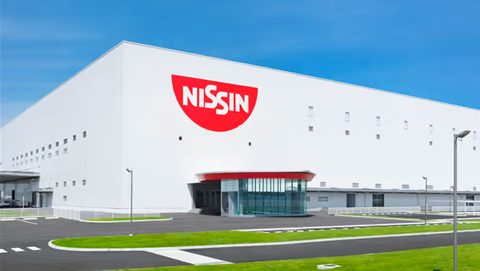Southeast Asia and India are experiencing rapid urbanisation, shifting demographics, and rising sustainability demands, which have led to the urgent need for advanced infrastructure solutions. This requires the architecture, engineering, and construction (AEC) industry to scale operations and do this efficiently and intelligently.
Outcome-based Building Information Modelling (BIM) is today becoming vital to help boost the industry in areas, including collaboration, reducing construction time and cost, improving quality and safety, and enhancing sustainability.
Autodesk’s vice president of AEC industry strategy, Nicolas Mangon, told iTnews Asia that, unlike conventional BIM, where architects manually create digital models and assess outcomes, including cost and sustainability after construction, outcome-based BIM begins with stakeholder-defined objectives, such as a net-zero school for 600 students by 2029 within budget.
With AI and predictive analytics, the software helps generate and evaluate hundreds of thousands of design options in real time, optimising for cost, timeline, and delivering sustainable designs before construction starts, he added.
While the tools to adopt outcome-based BIM are available, the real barrier lies in the large volume of work and the pressure on teams to deliver.
“There’s more work than ever before, but fewer professionals to do. It’s hard for people to stop and learn a new thing,” he explains.
Addressing the difficulty in coordinating with stakeholders
According to Mangon, the AEC industry remains fragmented globally with difficulty in coordinating with stakeholders, including architects, engineers, construction workers, and project managers, especially on large-scale projects like airports in India.
Another inefficiency lies in the repeated creation of the same information, as different team members might recreate drawings, quantities, or specifications multiple times for different purposes, wasting time and resources, said Mangon.
Outcome-based BIM addresses this by enabling the creation of information once, which can then be reused across functions and phases of a project.
Mangon points out that working in 3D enhances design accuracy and improves collaboration and understanding, particularly for non-technical stakeholders, including project owners.
Digital transformation continues to pose challenges, as firms work to adopt new processes, maintain data quality, and train teams.
Mangon mentioned that it is necessary to train AI and analytics on region-specific inputs to generate outcomes relevant to markets like Indonesia, rather than relying on Western design norms.
“Over the past few years, there has been a dramatic increase in data generated by AEC projects, about five times more than before, due to the richer detail in 3D models,” he added.
Ability to analyse project data for predictive decision-making
According to Mangon, the integration of data analytics and AI enhances outcome-based BIM by enabling predictive decision-making and contributes in three ways.
First, it analyses large volumes of project data to uncover trends and generate predictive insights.
For example, AI can flag potential delays by referencing the performance history of subcontractors, predict safety incidents, or forecast budget overruns based on material price fluctuations, said Mangon.
This allows project stakeholders to identify risks and take preventive action, he added.
Second, AI helps automate time-consuming, manual tasks, including drafting and documentation, allowing professionals to focus on project delivery without compromising on quality or accuracy.
The third is augmentation, where generative AI enhances human capabilities by helping professionals model and evaluate different design and construction options based on desired outcomes.
This helps the team make better decisions aligned with key performance indicators, including cost, sustainability, and schedule, before construction begins.
Mangon mentions that the effectiveness of AI-driven BIM depends heavily on the availability and quality of data.
One of the key barriers is data sharing, as firms are reluctant to provide project data due to intellectual property concerns.
Without access to real-world examples, it becomes difficult to train AI models that reflect best practices, said Mangon.
Similarly, poorly curated or inconsistent data limits AI’s ability to deliver useful insights.
To address this, firms and technology providers should invest in organising and validating data to ensure reliability, Mangon said.
Autodesk, for instance, curates data and builds synthetic datasets to supplement real-world examples.
These synthetic datasets are generated through complex simulations and used to train AI models where actual data is limited, Mangon mentions.
APAC showing interest in sustainable building practices
From a policy perspective, Nicolas notes that the APAC region is showing increasing interest in sustainable building practices.
Countries like Singapore are leading, but intent is also growing in India, Vietnam, and Indonesia.

While traditional BIM supports carbon impact assessments during design, outcome-based BIM makes sustainability a core deliverable, on par with cost and schedule.
- Nicolas Mangon, Vice President of Architecture, Engineering, and Construction (AEC), Autodesk
Outcome-based BIM does not guarantee a net-zero, low-cost build overnight, but it allows real-time sustainability assessments, helping teams identify the best possible solution within project constraints, Mangon added.
BIM shift requires process redesign and workforce training
Organisations need to implement new technology, redesign processes, and invest in workforce training to benefit from this shift.
Magnon mentions that measuring the value of BIM remains a key challenge.
Unlike digital tools, where A/B testing is possible, construction can't run parallel projects with and without BIM for direct comparison.
This makes it hard for IT leaders to quantify ROI, often slowing decisions without long-term metrics or case studies, said Magnon.
He outlines three common adoption pathways for outcome-based BIM.
The first is bottom-up, where early adopters, often younger staff, trial BIM on projects, gradually building internal support.
According to Magnon, the second is top-down, where CIOs or IT leaders use BIM after seeing its success elsewhere, even without a detailed plan.
The third and most effective in Southeast Asia is the policy-driven approach, where governments mandate BIM for public projects, he added.









